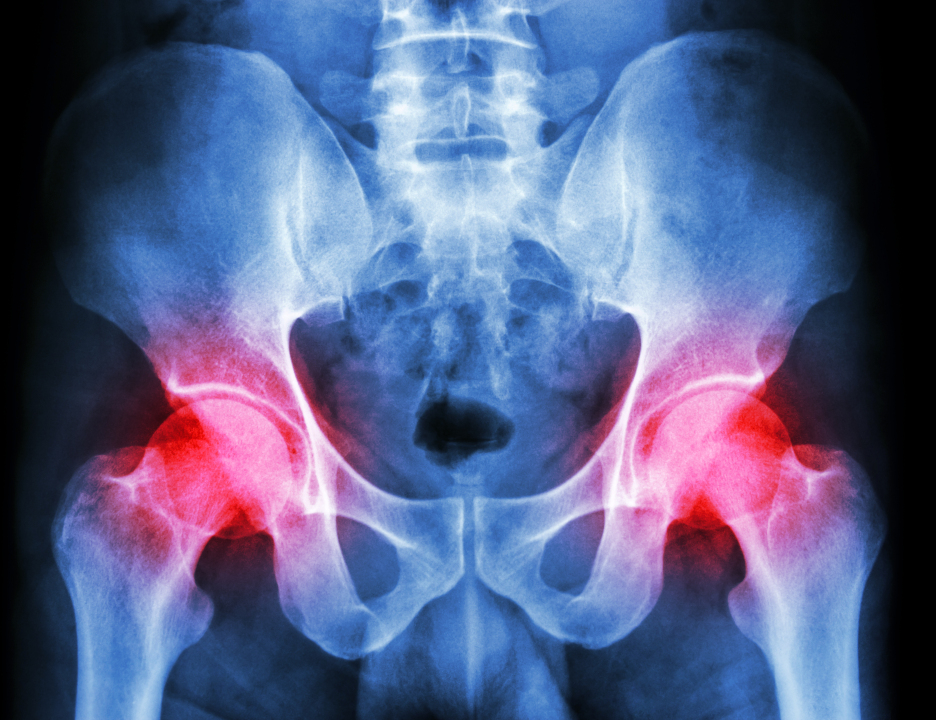Implant design, socioeconomic inequality, and opioid prescriptions are some of the topics of the recent studies summarized in the JBJS Guest Editorial “What’s New in Hip Replacement.” Here, we highlight 5 of the most compelling findings from the article, as selected by author Patrick Morgan, MD.
Cobalt-Chromium Implants
Using data from the National Joint Registry in the U.K., researchers investigated inpatient episodes for 374,359 primary total hip arthroplasties (THAs). Their goal: to determine whether cobalt-chromium-containing implants were associated with an increased risk of all-cause mortality, heart outcomes, cancer, or neurodegenerative disorders1. Follow-up was a mean of 5.1 years and up to 14.5 years. Implants containing cobalt-chromium accounted for 42.4% of the THAs. No association was found between cobalt-chromium implants and the negative clinical outcomes investigated.
Socioeconomic Status and Infection Risk
Socioeconomic inequality was reported to adversely affect the risk of infection after THA, according to a study of 103,901 patients in Denmark who underwent THA between 1995 and 20172. At 90 days following THA, the cumulative incidence of infection was highest in patients who had the lowest amount of savings, the least education, and the lowest income. Incidence of infection was also highest in patients who lived alone compared with those who did not.
Perioperative Opioid Use
Drawing on registry data of 80,483 patients in Sweden, investigators examined the impact of opioid use prior to THA3. Compared with patients who were not treated with opioids, patients with ≥4 opioid prescriptions in the year prior to THA had a higher risk of revision within 2 years and a higher risk of adverse events within 90 days. Additionally, at 1 year postoperatively, patient-reported outcome scores (VAS for pain and general health EuroQol-VAS) were worse for patients with ≥4 opioid prescriptions.
THA vs. Hemiarthroplasty for Femoral Neck Fracture
A recent meta-analysis of 13 randomized controlled trials compared the outcomes of THA vs. hemiarthroplasty (HA) in patients with intracapsular femoral neck fracture4. THA was associated with an increased risk of dislocation and, in patients >80 years old, an increased risk of mortality at 1 year. The authors suggested that these adverse events may outweigh the “limited functional improvement conferred by THA vs. HA,” and concluded that HA has equivalent clinical outcomes to THA in the treatment of intracapsular femoral neck fractures.
Cemented vs. Cementless Femoral Stem
The difference in revision rates between commonly used cemented polished stems and cementless prostheses was recently assessed in a study that included 201,889 THAs from the Australian Orthopaedic Association National Joint Replacement Registry5. Hip replacements using conventional polyethylene and metal-on-metal bearings were excluded. The researchers found that cemented stems had a lower revision rate at all time points. Cemented polished tapered stems were recommended for use in all age groups by both low-volume and high-volume surgeons.
“What’s New in Hip Replacement” is freely available at JBJS.org.
What’s New by Subspecialty
Each month, JBJS publishes a review of the most pertinent studies from the orthopaedic literature in a select subspecialty. To read the reports, visit the “What’s New by Subspecialty” collection at JBJS.org.
Recent OrthoBuzz posts include “What’s New in Osteoporosis and Fragility Fractures,” “What’s New in Limb Lengthening and Deformity Correction,” and “What’s New in Musculoskeletal Infection.”
References
- Deere K, Matharu GS, Ben-Shlomo Y, Wilkinson JM, Blom AW, Sayers A, Whitehouse MR. The risk of all-cause mortality, heart outcomes, cancer, and neurodegenerative disorders with cobalt-chrome-containing total hip arthroplasty implants: an analysis of the National Joint Registry. Bone Joint J. 2022 Mar;104-B(3):359-67.
- Edwards NM, Varnum C, Nelissen RGHH, Overgaard S, Pedersen AB. The association between socioeconomic status and the 30- and 90-day risk of infection after total hip arthroplasty: a registry-based cohort study of 103,901 patients with osteoarthritis. Bone Joint J. 2022 Feb;104-B(2):221-6.
- Simonsson J, Bülow E, Svensson Malchau K, Nyberg F, Berg U, Rolfson O. Worse patient-reported outcomes and higher risk of reoperation and adverse events after total hip replacement in patients with opioid use in the year before surgery: a Swedish register-based study on 80,483 patients. Acta Orthop. 2022 Jan 3;93:190-7.
- Wek C, Reichert I, Gee M, Foley R, Ahluwalia R. Have advances in surgical implants and techniques in hemiarthroplasty for intracapsular hip fractures improved patient outcomes compared to THA? A systematic review and meta-analysis of the evidence. Surgeon. 2022 Jan 25:S1479-666X(21)00196-7.
- Babazadeh S, de Steiger RN, Holder C, van Bavel D. Cemented polished tapered stems have lower revision rates than commonly used cementless implant up to 17 years of follow-up: an analysis of 201,889 total hip replacements from the Australian Orthopedic Association National Joint Replacement Registry. J Arthroplasty. 2022 Jan;37(1):110-8.



